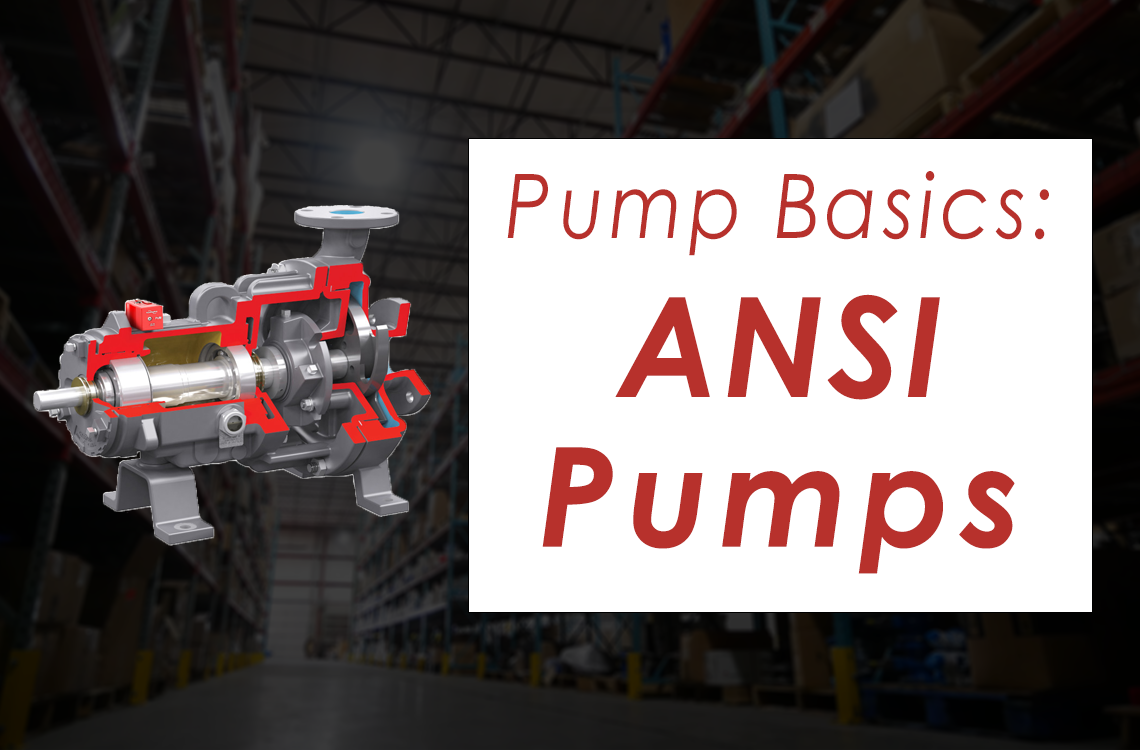
The Basics- What You Need to Know About ANSI Pumps
A horizontal end-suction pump that meets American National Standards Institute requirements.
Article written by FCX Performance, Inc
An ANSI pump, otherwise known as a pump meeting American National Standards Institute, is a horizontal end-suction pump that conforms to the dimensional envelope described in the ANSI/ASME B73.1 pump standards. ANSI B73.1 specifies an end-suction pump design that includes overall dimensions, location of the pump hold-down bolts, distance between the suction and discharge flange centerlines, and height of the pump centerline. This results in ANSI pumps being inventory-friendly, improving your mean time between failures (MTBF), and having the ability to take some pressure off repairs.
A Readily Available, Cost Effective, and Brand Interchangeable Pump
Meeting the ANSI requirements should convey this pump's reliability to its system. Around 75,000 ANSI pumps are manufactured each year. Producing a large volume allows manufacturers and distributors alike to carry a deep inventory of ANSI pumps and parts. The pump comes in many sizes; all sizes plug into one of a few different power frames. If your plant needs to carry 10 different pump sizes, you will not have to worry about also carrying 10 power frames. This gives you greater utilization of your inventory. At most, you may only need one or two power frames.
From ductile iron to titanium and non-metallics, the ANSI Pump can be made from a broad range of materials. ANSI pumps are meant to fit your needs as well as keep its high-functioning pump reputation. ANSI is a standard design for a pump, not a specific brand. Therefore, many manufacturers can create pumps that qualify under the ANSI terms. In ANSI B73.1, it states pump brands must be dimensionally interchangeable*, enabling users to use multiple brands in their system.
ANSI Pumps Can Improve Your MTBF (mean time between failure)
ANSI guidelines put requirements on the pump’s different functional aspects to ensure longevity of its parts. For example, ANSI places guidelines on the bearings of the pump. They are required to meet their L10 life. In order to ensure the shaft's stiffness ratio promotes a longer life for the seal and bearing, ANSI includes shaft deflection limits. There are also vibration limits on the pump that define the upper and lower vibration limits of the bearings. This ensures the bearings are not jostled around the pump, causing it to decrease its quality of production or bearing life.
ANSI Pumps Offer Features That Can Reduce Downtime
The back pullout feature of ANSI pumps allows the casing to remain bolted to the piping system for the rest of the pump to be removed for maintenance when needed. This allows you to avoid premature seal wear or untimely replacement of parts. Most pump failures occur around the seal chamber from fluid leaking along the shaft; the seal chamber on ANSI pumps can be designed to offer the best environment for your mechanical seal. You can extend the life of your mechanical seal with ANSI pump features that can provide an optimum environment for your mechanical seal.
Choosing an ANSI pump means you are choosing a pump design that adheres to national standards. Based on those design standards, you can rely on system efficiency, safety, reduced repairs and reduced downtime when using these pumps in your application. ANSI set the standard; we can offer an ANSI pump that's right for your application.
talk with an expertNeed help deciding what pump is right for your system? Talk with an expert to find out what will work best for you. Our trained Pump specialists are ready to assist you! |


